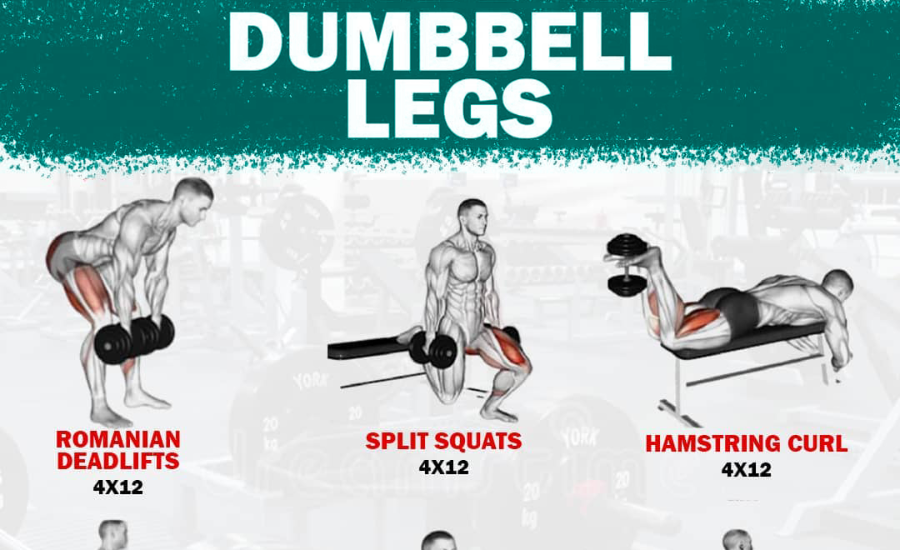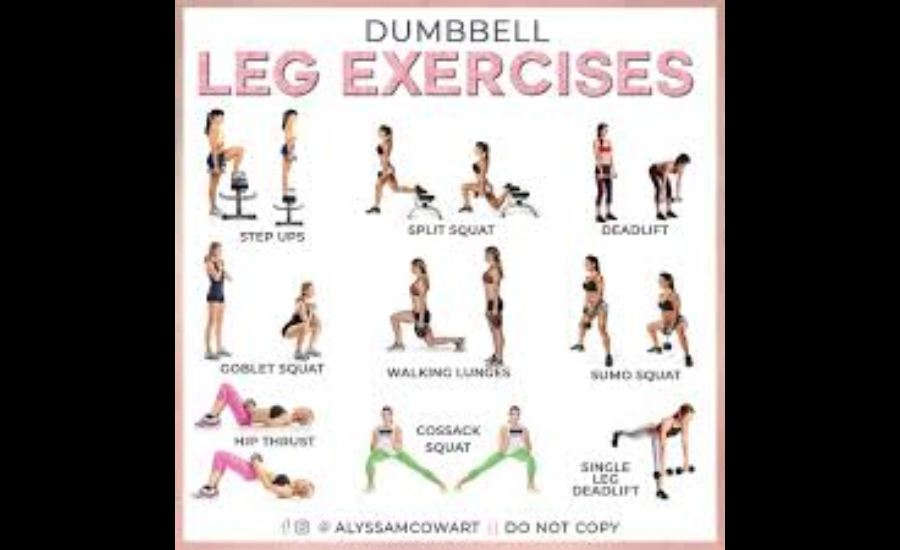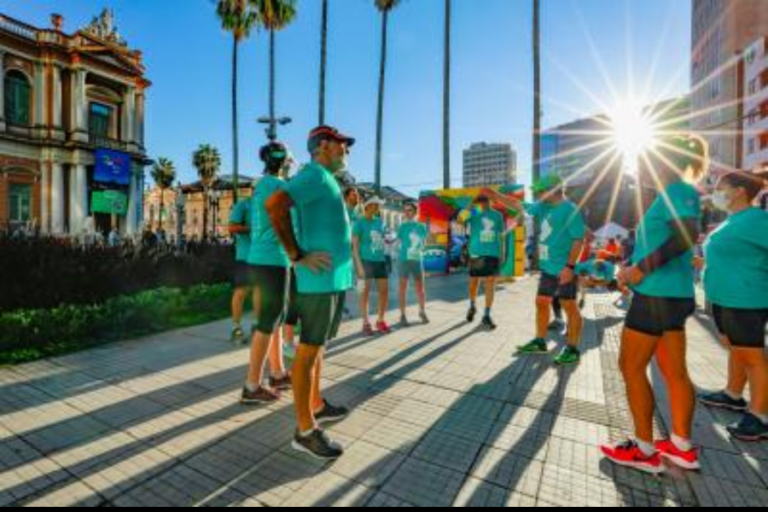Leg Workouts with Dumbbells: Build Strength and Tone Your Lower Body
Leg Workouts with Dumbbells Dumbbells are incredibly versatile, offering the flexibility to target every muscle group with ease. For leg training, they provide an efficient way to work the major muscles in the lower body with minimal extra equipment.
This article highlights seven essential dumbbell exercises that engage the key muscles in your legs, ensuring a full-body lower body workout. By combining these exercises, you can craft a dynamic and effective leg training routine that maximizes strength and endurance.
Simplifying Leg Workouts with Dumbbells

When it comes to planning an effective leg workout with dumbbells, the variety of exercises available can sometimes feel overwhelming. However, most lower body exercise can be grouped into three key movement patterns that form the foundation of functional leg training: squats, hip hinges, and lunges.
These movement patterns are essential for activating almost every major muscle in your legs, while also engaging your core for stability. By incorporating dumbbells into these exercises, you can significantly increase the intensity compared to bodyweight movements alone, leading to improved strength and muscle development.
Dumbbells offer the flexibility to adjust the weight, making it easy to tailor your workout to your current fitness level. Whether you’re looking to challenge yourself with heavier weights or need a lighter load for a more manageable workout, dumbbells provide the perfect tool for progressing in your leg training.
Key Leg Movement Patterns for a Complete Workout
The squat is an essential movement pattern that mirrors the action of sitting down and standing up, targeting the quads, glutes, hamstrings, calves, and lower back. This exercise is fundamental for building strength in the legs and improving overall functionality.
The hip hinge, on the other hand, is crucial for safely lifting objects from the ground, preventing potential back injuries. Deadlift variations, which emphasize the hip-hinge motion, are particularly effective at engaging the quads, glutes, hamstrings, spinal erectors, and core muscles for stabilization, according to research.
Lastly, lunges play a pivotal role in locomotion, benefiting activities like walking, running, and climbing stairs. Incorporating variations such as lateral lunges, step-ups, and Bulgarian split squats can enhance unilateral stability and coordination. These lunges target the quads, hamstrings, glutes, and calves, offering a different movement pattern that complements squats and deadlifts, providing a well-rounded approach to building functional leg strength.
Mastering the Goblet Squat for Stronger Legs
The goblet squat is a powerful leg exercise that incorporates a dumbbell as external resistance, making it an effective way to target the squat movement pattern. This exercise helps develop strength in the quads, glutes, and hamstrings, while promoting proper squat form.
To perform the goblet squat, hold the dumbbell vertically, gripping one side with both hands while the other side hangs freely. Position your feet slightly wider than shoulder-width apart, with your toes turned outward at a slight angle (around 5–12 degrees).
Begin by pushing your hips back and lowering your body, allowing your knees to bend naturally. Aim to squat as deeply as you can while maintaining proper form, keeping your torso as upright as possible. Try to align your torso angle with your shin angle throughout the movement to avoid leaning forward. Research indicates that deeper squats are more effective for muscle development than partial ones, so focus on full range of motion for optimal results.
Effective Leg Exercises with Dumbbells
The reverse lunge is an excellent exercise to target the lunge pattern, promoting better functional coordination and balance. To perform the reverse lunge, hold a dumbbell in each hand at your sides, keeping your feet about hip-width apart. Step one leg back, slightly beyond a normal step, and lower your back knee toward the ground, rotating your foot inward slightly for smooth movement.
Once you’ve mastered the reverse lunge, the forward lunge is the next step in progressing your leg workout. Focus on keeping your back knee lower toward the ground as you step forward, rather than pushing your front knee too far forward to protect your joints. Step forward and lower your back knee gently toward the ground. Drive through your front foot to return to the start, either stepping back into position or staying in the lunge stance as you rise.
The step-up is another great exercise that mimics stair climbing and emphasizes glute activation more than standard lunges. You’ll need a box or elevated surface 6-18 inches high. To perform the step-up, stand facing the box with a dumbbell in each hand. Step one leg onto the box, pushing through your raised leg to bring the trailing leg up. Reverse the movement by stepping back and returning to your starting position. You can perform all reps on one leg or alternate sides.
Lastly, the lateral lunge combines elements of both the lunge and squat patterns. This exercise targets the quads and glutes while improving hip flexibility and mobility. It is most effective when used for mobility and warm-ups rather than as the main lunge variation in your routine. Begin by holding a dumbbell with both hands, standing with your feet hip-width apart. Take a large step to the side, keeping your torso facing forward, and lower your hips toward the ground. To increase your range of motion, allow your straight leg’s toes to lift slightly off the ground as you move.
Optimizing Your Dumbbell Leg Workout Routine

A well-structured dumbbell leg workout should focus on 3 to 4 key movements, performing 3 to 5 sets per exercise with 8 to 12 reps per set. This range is ideal for targeting strength and muscle growth. Between sets, rest for 1 to 2 minutes to allow your muscles to recover, and between exercises, take a slightly longer rest of 2 to 3 minutes.
Starting your workout with a 5 to 10-minute aerobic warmup, such as light jogging or walking, is essential for preparing your body for more intense exercises and reducing the risk of injury. Throughout your workout, aim for a total of 80 to 120 reps per leg. For exercises involving both legs, count each repetition as one for both legs, while single-leg exercises should be performed on each side for it to count toward your total.
For a balanced workout, make sure to incorporate at least one squat, lunge, and hip-hinge movement into each session. For simplicity, the step-up exercise can be categorized as a lunge, while the sumo squat can serve as either your squat or hip-hinge movement, depending on the emphasis of the workout.
Consistency and Variety for Maximum Results
Training legs with dumbbells is an effective and simple approach to building strength and muscle in your lower body. By incorporating a variety of exercises, you can target all major muscle groups efficiently. For optimal results, aim to perform these workouts two times per week, especially if you’re new to strength training. This frequency allows for significant improvements in both strength and muscle mass over time.
Also Read: Shorts%20de%20corrida
Final Words
Leg workouts with dumbbells are a versatile and efficient way to build strength and muscle in your lower body. By incorporating key movement patterns like squats, lunges, and hip hinges, you can target all major leg muscles, including the quads, glutes, hamstrings, and calves. Dumbbells allow for progressive overload, enabling you to increase the intensity of your workouts as you build strength.
A balanced leg workout should include a combination of exercises such as the goblet squat, reverse lunge, and step-up. These exercises engage the core for stability while promoting functional strength. To see optimal results, aim for 3 to 4 exercises per session, performing 3 to 5 sets with 8 to 12 reps per set.
For exclusive shoe discounts, don’t miss out on Lepbound latest deals.






